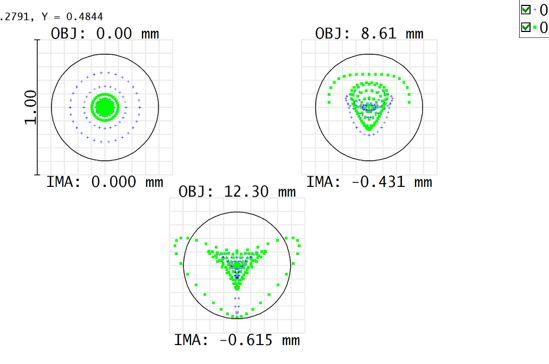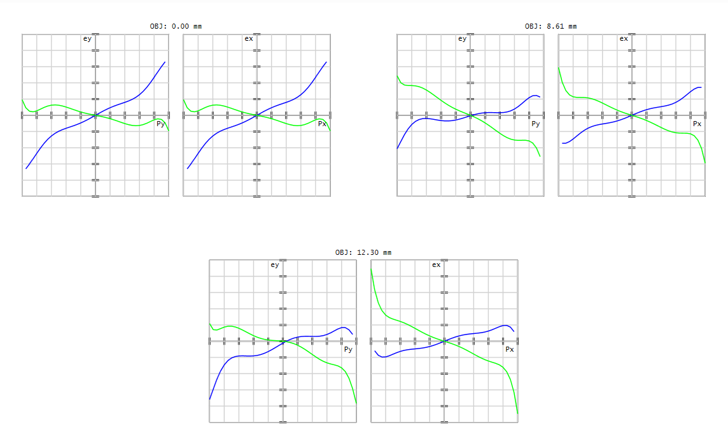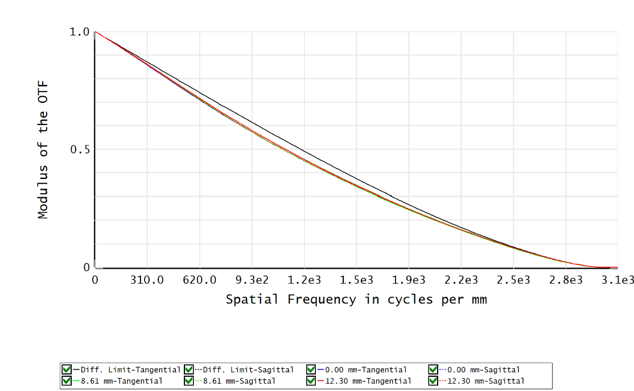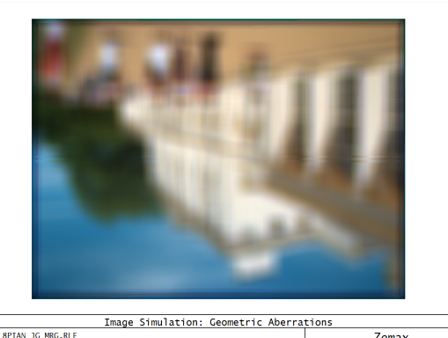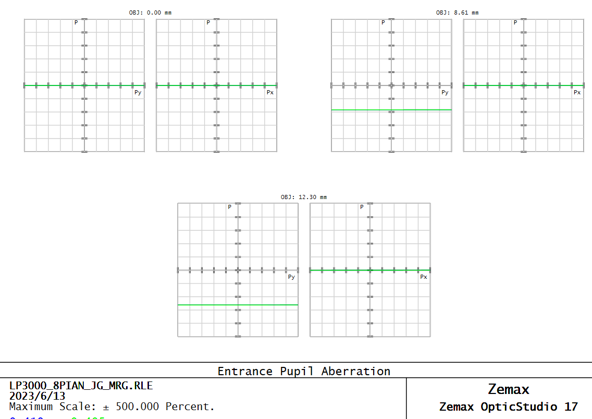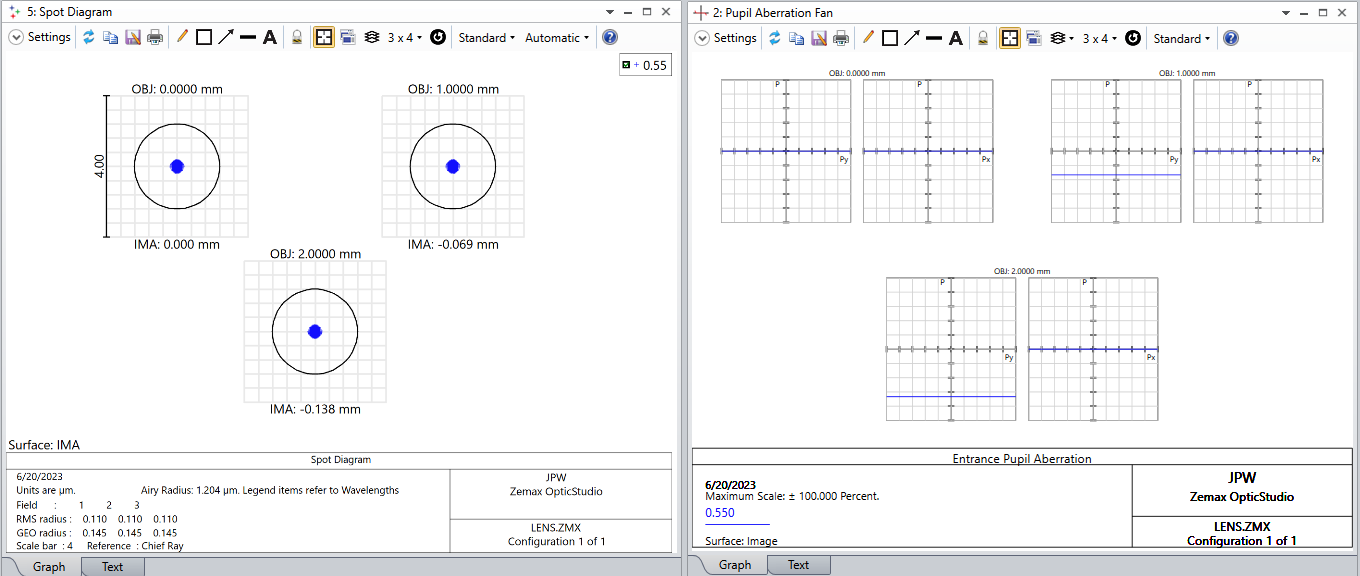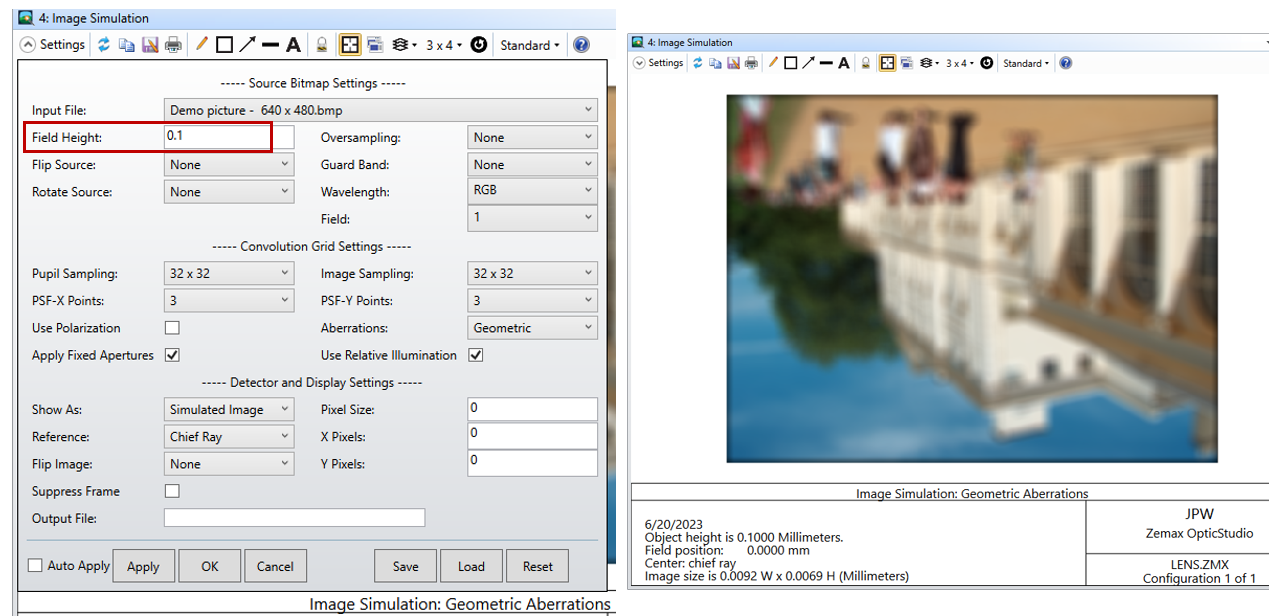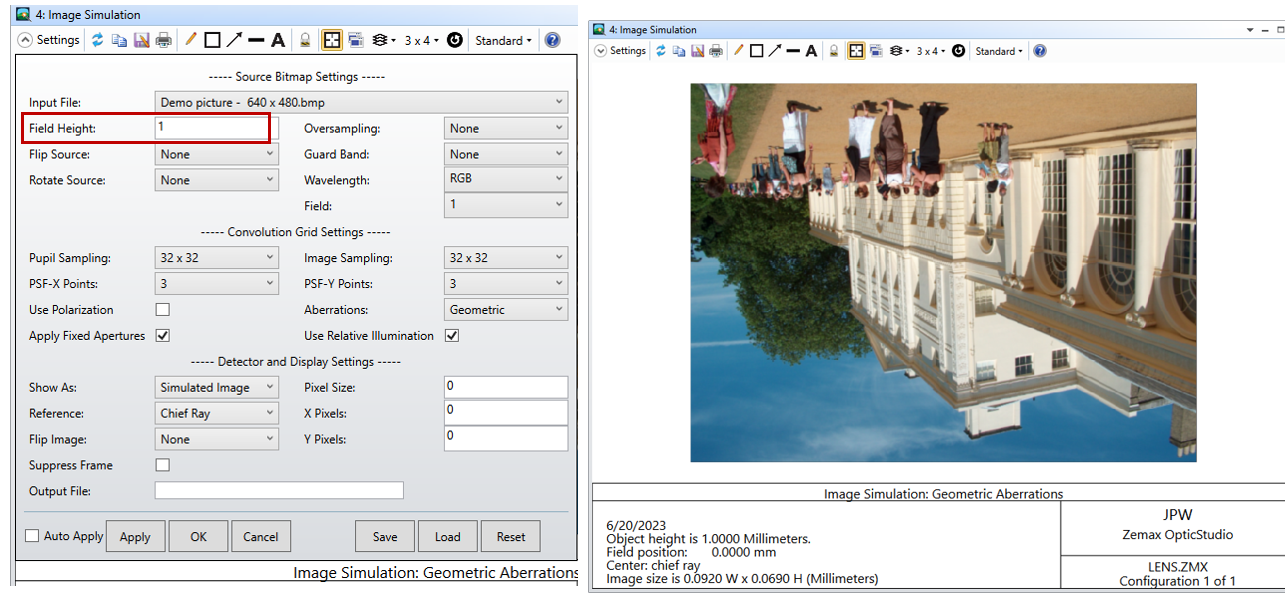Hello everyone,
I intended to design a double-telecentric lens, but I didn’t start with the classic design form. I just modified a lens with the “telecentric object space”function, and then I found an interesting result. Spot diagram, ray fan, MTF all looked good, but the image simulation was bad, I suspect the reason is the poor pupil aberration. Can anyone help me with this? and how can the pupil aberration affect the real image quality?

